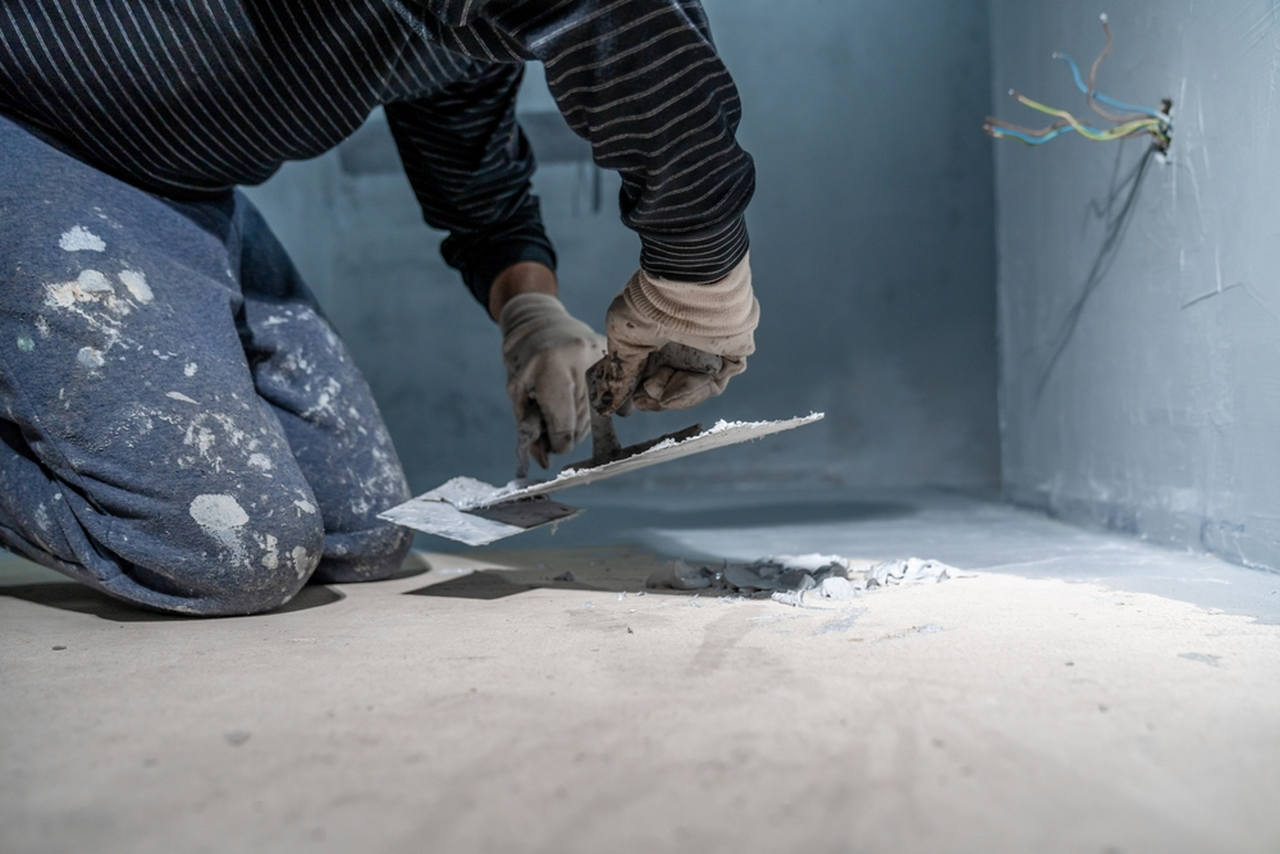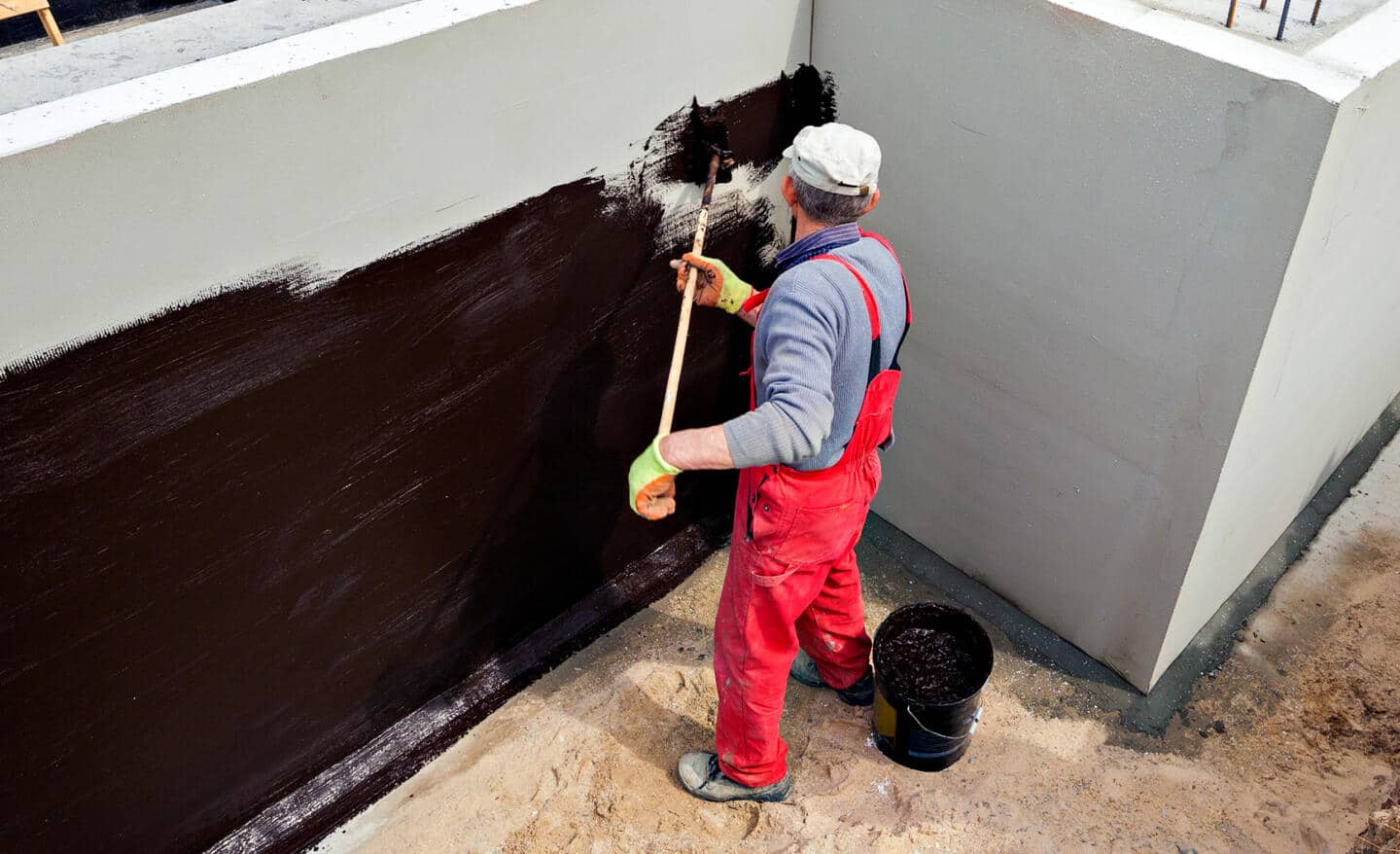Foundation waterproofing Omaha: How It Saves You Thousands
Just How Waterproofing Functions: A Detailed Check Out Techniques and Technologies
Waterproofing is crucial for safeguarding structures from moisture-related damages. It entails various strategies and innovations that develop barriers versus water intrusion. Conventional techniques, such as compacted clay, coexist with modern-day developments like liquid-applied membranes. Recognizing the subtleties of these methods is vital for reliable application. The effectiveness of any waterproofing solution hinges not just on the methods made use of yet also on ongoing maintenance and evaluation. What are the key elements that affect lasting efficiency?
Recognizing the Basics of Waterproofing
Waterproofing is a vital procedure that secures frameworks from water intrusion, which can cause considerable damage gradually. This approach entails the application of various products and methods created to develop a barrier versus dampness. The primary goal is to avoid water from penetrating surfaces, which can cause damage, mold and mildew growth, and architectural instability.Various factors affect the selection of waterproofing technique, consisting of the type of structure, its place, and environmental conditions. Recognizing the physics of water activity and the residential properties of various products is essential in selecting an effective waterproofing solution.Effective waterproofing not just safeguards buildings but also improves their durability and integrity. Usually, it is incorporated right into the layout stage of construction to ensure extensive security. As awareness of water-related issues grows, the relevance of comprehending waterproofing basics becomes increasingly clear to engineers, builders, and residential or commercial property proprietors alike.
Standard Waterproofing Techniques
Standard waterproofing methods have been made use of for centuries, relying upon time-tested strategies and products to guard structures from water damages. Among the oldest approaches includes making use of clay, which, when compressed, creates a natural obstacle versus dampness. In addition, asphalt, a sticky, black material stemmed from oil, has been employed for its waterproof residential properties, usually used to roofings and foundations.Another strategy includes the application of lime-based plasters, which supply a breathable layer that allows moisture to get away while stopping water ingress. Thatch roofing, a standard method still seen in some cultures, supplies outstanding waterproofing as a result of its securely packed straw layers.Moreover, the usage of stone and block has actually been popular, as these products are inherently immune to water when effectively installed. On the whole, traditional waterproofing methods emphasize the relevance of picking proper materials and building practices to enhance resilience versus water invasion.
Modern Waterproofing Technologies
Advancements in modern waterproofing modern technologies have actually reinvented the method structures are protected from water damages. Ingenious techniques such as liquid-applied membrane layers and innovative sealants have actually boosted the performance and convenience of waterproofing services. These modern technologies enable smooth application, decreasing the threat of leaks and guaranteeing extensive coverage over complex surfaces.Moreover, the combination of smart innovations, such as moisture sensors and automated tracking systems, makes it possible for real-time evaluation of waterproofing efficiency. This positive method promotes timely maintenance and lowers long-lasting repair service costs.Additionally, advancements in spray-applied coatings use quick application and exceptional attachment, adjusting to various substrates while offering robust protection. Techniques like polymer-modified systems further boost adaptability and resilience, making them appropriate for varied environments. In general, contemporary waterproofing innovations not only minimize water intrusion however additionally add to the durability and sustainability of structures, marking a substantial change in the sector.
Products Made Use Of in Waterproofing
The performance of waterproofing services greatly counts on the materials utilized in their application. Different materials are utilized to create obstacles against water ingress, each with unique residential properties fit for different atmospheres. Typically made use of materials include membrane layers, layers, and sealants.Liquid-applied membranes, usually made from polyurethane or acrylic, create a seamless obstacle that adapts to intricate surfaces. Sheet membrane layers, typically built from rubber or thermoplastic, deal toughness and are suitable for larger areas. In addition, cementitious waterproofing materials, composed of cementitious compounds, give excellent bond and flexibility.Sealants made from silicone or polyurethane are crucial for joints and joints, making sure comprehensive protection. In addition, advanced materials, such as geo-composite membranes, integrate numerous features, boosting efficiency. Generally, the option of waterproofing products is essential in attaining lasting and effective water resistance, customized to details task demands and ecological problems.
Typical Applications of Waterproofing
Waterproofing plays a crucial duty in different fields, making sure the durability and integrity of structures. Usual applications consist of domestic solutions that shield homes, business infrastructure that safeguards companies, and industrial settings that require durable security versus moisture. Understanding these applications highlights the significance of waterproofing in keeping both security and performance throughout different settings.
Residential Waterproofing Solutions
Numerous home owners face obstacles with moisture invasion, making efficient property waterproofing remedies vital. Various techniques exist to resolve this issue, consisting of exterior and interior waterproofing systems. Interior solutions commonly entail the application of sealants and coverings to cellar walls, which assist protect against water seepage. Exterior approaches generally include the installation of drainage systems and water-proof membranes that draw away water far from the foundation.Additionally, home owners may consider sump pumps to get rid of water buildup and best waterproof sealer dehumidifiers to control humidity degrees. Correct grading and using seamless gutters likewise play a vital function in taking care of water circulation around the home. By implementing these techniques, house owners can considerably decrease the risk of water damage and mold growth, making certain a completely dry and secure living environment.

Business Facilities Defense
Reliable waterproofing options play an essential duty in the security of commercial infrastructure. Water Solutions Omaha. These techniques are necessary for protecting structures, auto parking structures, and bridges from water damage, which can compromise structural honesty and cause pricey repairs. Common applications consist of the installment of membranes, coverings, and sealants that produce obstacles against moisture infiltration. Areas such as cellars, roofs, and outside walls are commonly prioritized to assure longevity and sturdiness. In addition, waterproofing systems can boost power efficiency by preventing water-related issues that may result in mold growth and wear and tear. By applying robust waterproofing actions, homeowner can shield their financial investments and keep functional effectiveness, inevitably adding to the general sustainability of industrial facilities
Industrial Applications Summary
While different industries encounter distinct obstacles, the demand for reliable waterproofing remedies stays a consistent in industrial applications. Industries such as production, building and construction, and energy typically run into atmospheres where moisture direct exposure can endanger structural integrity and operational effectiveness. In manufacturing facilities, waterproofing is important for shielding equipment and materials from water damages. In construction, it safeguards foundations and basements versus groundwater infiltration. The energy sector counts on waterproofing for the defense of devices in hydroelectric plants and offshore structures. In addition, food processing industries use waterproofing to ensure hygiene and conformity with safety and security criteria. Overall, reliable waterproofing services are necessary for enhancing resilience, safety and security, and performance throughout numerous commercial see here now settings.
Upkeep and Durability of Waterproofing Solutions
Waterproofing solutions are designed to supply lasting protection versus wetness breach, routine maintenance is important to ensure their effectiveness and long life. Regular examinations play a considerable function in identifying prospective concerns such as fractures, peeling off, or signs of water damage. Resolving these troubles without delay can avoid further deterioration and expensive repairs.Additionally, cleansing the surface area of waterproofed locations helps get rid of dust and particles that can jeopardize the integrity of the waterproofing obstacle. It's additionally advisable to reapply safety finishes or sealants as advised by suppliers to preserve excellent efficiency. Ecological factors, such as UV direct exposure and extreme climate condition, can influence the life expectancy of waterproofing products, making routine evaluation crucial
Often Asked Inquiries
Can Waterproofing Be Applied in Cold Climate?
The question of applying waterproofing in winter elevates concerns concerning attachment and curing. Lots of products may not do at their finest in reduced temperatures, requiring careful option and consideration of certain standards for efficient application.
Exactly How Lengthy Does Waterproofing Commonly Last?
The period of waterproofing effectiveness differs based on products and environmental factors. Generally, it can last from five to 10 years, yet regular upkeep and examinations are important to assure peak performance and durability.
Is DIY Waterproofing Effective and Safe?
The effectiveness and security of DIY waterproofing depend on various aspects, including worldly high quality and application technique. While some people attain satisfying outcomes, others may experience issues that compromise long-term security and structural honesty.
What Are the Indications of Failing Waterproofing?
Indicators of failing waterproofing include noticeable water discolorations, look at these guys peeling paint, mold and mildew development, moldy smells, and wetness in walls or ceilings - Water Solutions Omaha. These signs suggest jeopardized barriers, necessitating prompt inspection and prospective remediation to avoid more damage
Exactly how Do I Choose the Right Waterproofing Professional?
